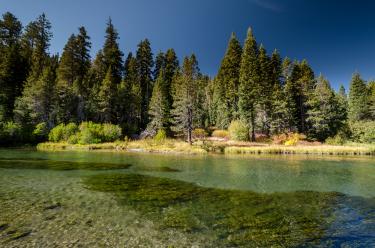How Your Activities Can Impact Water Quality
Any activity in your woodland that alters vegetation or impacts soil will have some effect on water flow and possibly water quality. Timber harvesting changes the way water hits the forest floor; road building changes the density of the soil and its ability to absorb water; and any change in topography, however small, can change the pattern of water flow.
By altering the way water behaves on the land, you can unintentionally modify everything from stream acidity and clarity to the oxygen content, the nutrient balance and temperature of water bodies. These impacts can have far ranging effects on many forest plants and animals, altering the growth rate of trees, the diversity of woodland wildlife habitat, and the ability of fish to travel and produce offspring.
The activities most likely to impact water flow and quality are timber harvesting, road and trail building, and drainage construction, as well as anything that significantly impacts soil and vegetation make-up. These intensive activities can lead to decreased water quality by:
- Altering the soil’s ability to absorb water. Compaction and other disturbance to forest soil often reduces the natural ability of the forest floor to absorb rainfall and snowmelt.
- Increasing soil erosion. Exposing mineral soil and using fill dirt can increase the likelihood of soil being carried away and into waterways.
- Changing water flow patterns and speeds by removing vegetation. The loss of plants means water hits the soil harder and faster than it would naturally, and the disturbance of soil can change the direction water takes when it flows along the ground.
These impacts will diminish water quality but you can avoid or minimize the effect your activities have on water by following Best Management Practices.
How can I get more tips?
It’s simple! Enter your email below.

